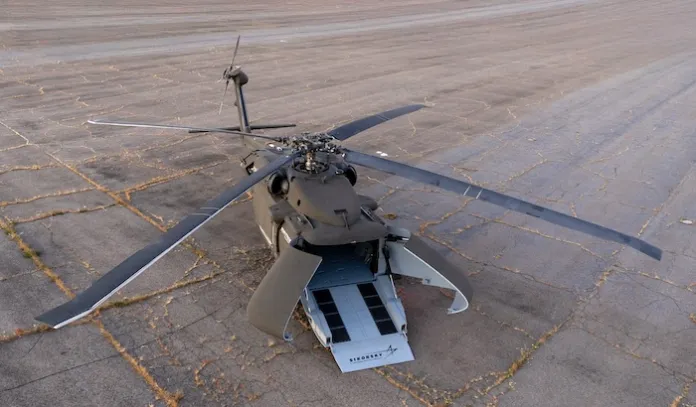


Sikorsky unveiled its newest Black Hawk helicopter on Monday, which no longer requires a pilot to fly it, making it effectively a large drone.
The new S-70UAS U-Hawk, which was on display at this week’s Association of the United States Army exposition in Washington, D.C., has 25% more cargo space than a typical Black Hawk because it doesn’t need a cockpit, any seats, or crew stations.
Recommended Stories
- What is the Insurrection Act, the law at the center of the debate over Trump deploying the National Guard?
- Hamas will only release bodies of four hostages
- Vance says troops to be paid with tariff revenue during shutdown
The prototype on display on Monday featured an uncrewed ground vehicle and a ramp leading from the front, as well as another compartment with small- or medium-range drones that can be fired from the helicopter’s side.
It’s also capable of carrying up to four Joint Modular Intermodal Containers, twice as many as the current capability, and can carry a HIMARS pod of six rockets, or two Naval Strike Missiles.
Sikorsky transformed a UH-60L Black Hawk helicopter into the S-70UAS system in less than a year.

“So, autonomous helicopter over a manned system: number one, we’re not putting the crew at risk. There are certain missions that are dull, dangerous, etc., that we do not want to put a human crew. The other thing is, there is a cost savings, because we’re not paying for our crew. We’re not paying for the training of a crew,” Erskine Bentley, director of strategy and business development for Sikorsky Advanced Programs, told the Washington Examiner.
The S-70UAS U-Hawk, which is controlled via tablet through the company’s MATRIX autonomy system, can fly for up to 1,600 nautical miles or loiter for up to 14 hours without refueling. Its first flight is scheduled for next year.
NORTHCOM TESTS NEW COUNTER-DRONE TECHNOLOGY FOR DEFENSE OF US HOMELAND
As Bentley outlined, a major benefit of autonomous systems is that they can take actions deemed too dangerous for military personnel. The S-70UAS U-Hawk can effectively clear the way for manned helicopters to enter a dangerous environment.
“So, as the Army is conducting an air assault, you would envision the UHawk flying ahead of the soldiers. As the UHawk comes into the landing zone area first, it dispenses launched effects out of the sides of the aircraft, out of our launched effects quiver,” Bentley said. “Then when it lands, it disembarks the UGV, and then the aircraft departs, and this is done ahead of any soldiers putting boots on the ground.”
